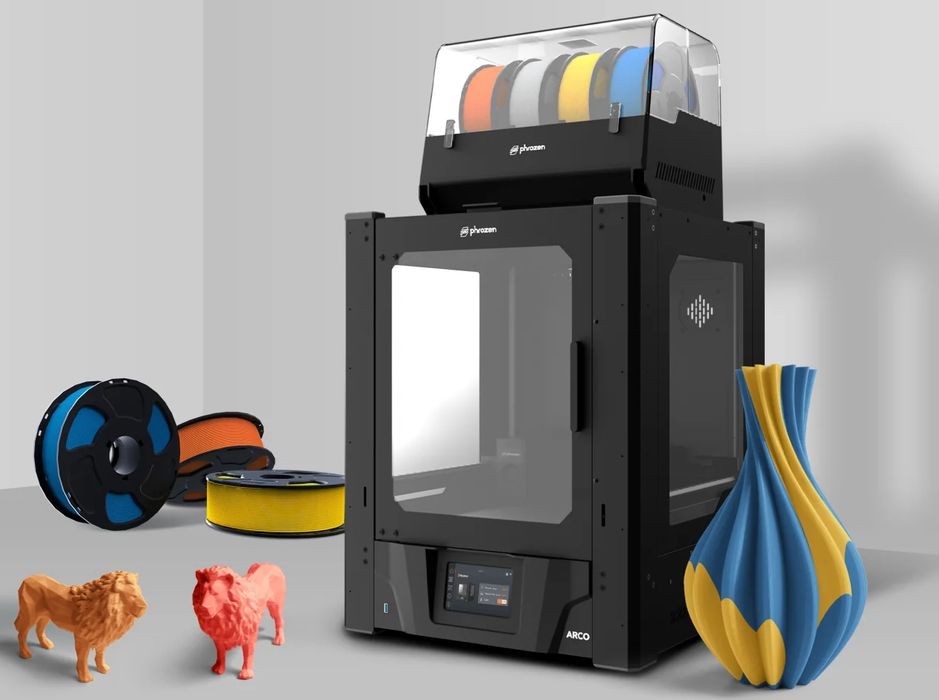
Phrozen has leapt into the world of FFF 3D printing.
The Taiwan-based company launched in 2016 with the first of many resin-powered desktop 3D printers. Since then they’ve run multiple successful crowdfunding campaigns for a series of gradually enhanced devices.
However, all of these devices were resin machines. It seemed that Phrozen’s focus was MSLA technology.
But that seems to have changed. The company revealed a new device, the Arco, which uses the FFF process. First shown as a prototype at Formnext in November, the Arco is now appearing in company promotions, suggesting its release is imminent.
Why would Phrozen, a company that’s been successful in one segment of 3D printing, want to enter the far more competitive FFF market? That sector is overflowing with competitors and the only way to succeed would be to provide benefits that exceed those of others.
That seems to be the case. The Arco is not a typical desktop 3D printer of the past few years. Instead it has a number of features that equal or surpass those of the best machines on the market today.
One is high speed printing. The top speed is said to be 600mm/s, which is likely achieved when printing at 0.1mm layers. It’s not clear what the machine’s flow rate specification might be. However, the stated acceleration is a whopping 30,000mm/s/s. The firmware is Klipper, known for competent high speed operations.
The Arco sports a rather large build volume of 300 x 300 x 300, equal to the volume of many professional devices and bigger than virtually all common desktop machines.
I should point out that the Arco uses a CoreXY design, which is quite amenable to high speed 3D printing: the bed does not move and jiggle the print. In fact, the plate doesn’t even rise: the toolhead lowers to meet the plate and the print remains stationary throughout the print job.
The extrusion system on the Arco is quite interesting. It has a shorter path length, which enables the use of high speed printing on unusual materials, including TPU. Most other high speed devices are unable to print that material at high speeds, even through they can handle PLA at high speed. Somehow Phrozen has designed the extruder to prevent filament bending that usually fouls up TPU printing.
As you might expect, the Arco provides automatic calibration, including a 5 x 5 leveling matrix. There’s also a 5” color touchscreen for control, and a custom PIXUP software tool to prepare jobs. The software also links to a large library of 3D models, which seems to now be a pattern among 3D printer manufacturers.
An option is multicolor 3D printing through the use of a four-spool filament swapping system mounted on top of the machine, called the “Chroma Kit”. The design of this unit seems somewhat similar to the very successful AMS design by competitor Bambu Lab. This approach is more reliable than the Prusa MMU design, and I expect the Arco method to be successful.
Pricing is quite interesting for this device. The list price is to be US$849, which is on par with competing machines such as the Bambu Lab P1S. However, they have a unique early bird pricing scheme: pay US$50 now and get a US$250 discount later when sales commence. That would make the device’s effective price US$599, which is quite a good deal for a machine that has these characteristics. Note that the Chroma Kit is likely a separately priced option.
It’s expected Phrozen will launch the device sometime this spring via a Kickstarter campaign, as they have done with other 3D printers.
Via Phrozen
